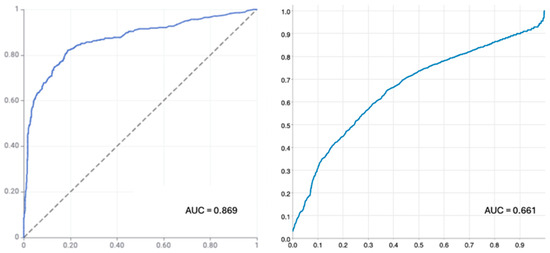Plants serve as reservoirs of bioactive compounds endowed by nature, rendering them promising subjects for investigating chemical diversity. Despite their potential, much remains untapped, whether in standardized extracts or isolated pure compounds. This unexplored terrain has paved the way for significant discoveries in
[...] Read more.
Plants serve as reservoirs of bioactive compounds endowed by nature, rendering them promising subjects for investigating chemical diversity. Despite their potential, much remains untapped, whether in standardized extracts or isolated pure compounds. This unexplored terrain has paved the way for significant discoveries in pharmaceuticals. Notably, research has delved into the medicinal properties of
Mallotus philippensis, a prominent plant in South Asia. Employing meticulous extraction techniques such as maceration, the fruit of this plant underwent initial antimicrobial screening, revealing encouraging results. Subsequent fractionation of the plant’s extracts via liquid–liquid extractions, utilizing dichloromethane and absolute ethanol, facilitated further analysis. Evaluating these fractions for antibacterial activity demonstrated efficacy against various pathogenic microorganisms, particularly
Pseudomonas aeruginosa and
Escherichia coli, notably by the ethanolic and dichloromethane extracts. Furthermore, a comprehensive phytochemical analysis unveiled the presence of alkaloids, flavonoids, saponins, glycosides, phenols, and tannins. An assessment of the extracts’ antioxidant potential via the 1,1-diphenyl-2-picrylhydrazyl (DPPH) free radical scavenging assay showcased significant activity, with a radical scavenging rate of 97%. This underscores the significance of utilizing fruit remnants, which are often rich in valuable chemical constituents yet commonly discarded, thereby adding value to both the species and the environment. Further investigation focused on the composition of
Mallotus philippensis fruit, encompassing volatile and non-volatile metabolites through HPLC-MS analysis. Additionally, this study introduced the application of ionic liquid-loaded polysulfone microcapsules to enrich target constituents from crude extracts. An exploration of the key separation conditions, results, and recycling performance of these microcapsules provided insights for future research endeavors. Overall, this comprehensive study of
Mallotus philippensis fruit extracts establishes a foundation for the ongoing exploration and development of this medicinal plant.
Full article
 IJMS
IMPACT
IJMS
IMPACT Applied Sciences
IMPACT
Applied Sciences
IMPACT Sustainability
IMPACT
Sustainability
IMPACT Sensors
IMPACT
Sensors
IMPACT JCM
IMPACT
JCM
IMPACT Materials
IMPACT
Materials
IMPACT Molecules
IMPACT
Molecules
IMPACT Energies
IMPACT
Energies
IMPACT Electronics
IMPACT
Electronics
IMPACT Remote Sensing
IMPACT
Remote Sensing
IMPACT Cancers
IMPACT
Cancers
IMPACT Nutrients
IMPACT
Nutrients
IMPACT Mathematics
IMPACT
Mathematics
IMPACT Foods
IMPACT
Foods
IMPACT Buildings
IMPACT
Buildings
IMPACT Polymers
IMPACT
Polymers
IMPACT Animals
IMPACT
Animals
IMPACT Water
IMPACT
Water
IMPACT Plants
IMPACT
Plants
IMPACT Agronomy
IMPACT
Agronomy
IMPACT Biomedicines
IMPACT
Biomedicines
IMPACT Processes
IMPACT
Processes
IMPACT Microorganisms
IMPACT
Microorganisms
IMPACT Diagnostics
IMPACT
Diagnostics
IMPACT Nanomaterials
IMPACT
Nanomaterials
IMPACT Viruses
IMPACT
Viruses
IMPACT Medicina
IMPACT
Medicina
IMPACT Healthcare
IMPACT
Healthcare
IMPACT Cells
IMPACT
Cells
IMPACT Forests
IMPACT
Forests
IMPACT Agriculture
IMPACT
Agriculture
IMPACT Land
IMPACT
Land
IMPACT JMSE
IMPACT
JMSE
IMPACT IJERPH
IJERPH
 Symmetry
IMPACT
Symmetry
IMPACT Genes
IMPACT
Genes
IMPACT Pharmaceutics
IMPACT
Pharmaceutics
IMPACT Coatings
IMPACT
Coatings
IMPACT Micromachines
IMPACT
Micromachines
IMPACT Pharmaceuticals
IMPACT
Pharmaceuticals
IMPACT Atmosphere
IMPACT
Atmosphere
IMPACT Children
IMPACT
Children
IMPACT Religions
IMPACT
Religions
IMPACT Antioxidants
IMPACT
Antioxidants
IMPACT Life
IMPACT
Life
IMPACT Metals
IMPACT
Metals
IMPACT Biomolecules
IMPACT
Biomolecules
IMPACT Vaccines
IMPACT
Vaccines
IMPACT Education Sciences
IMPACT
Education Sciences
IMPACT Minerals
IMPACT
Minerals
IMPACT Horticulturae
IMPACT
Horticulturae
IMPACT Brain Sciences
IMPACT
Brain Sciences
IMPACT JPM
IMPACT
JPM
IMPACT Bioengineering
IMPACT
Bioengineering
IMPACT



























